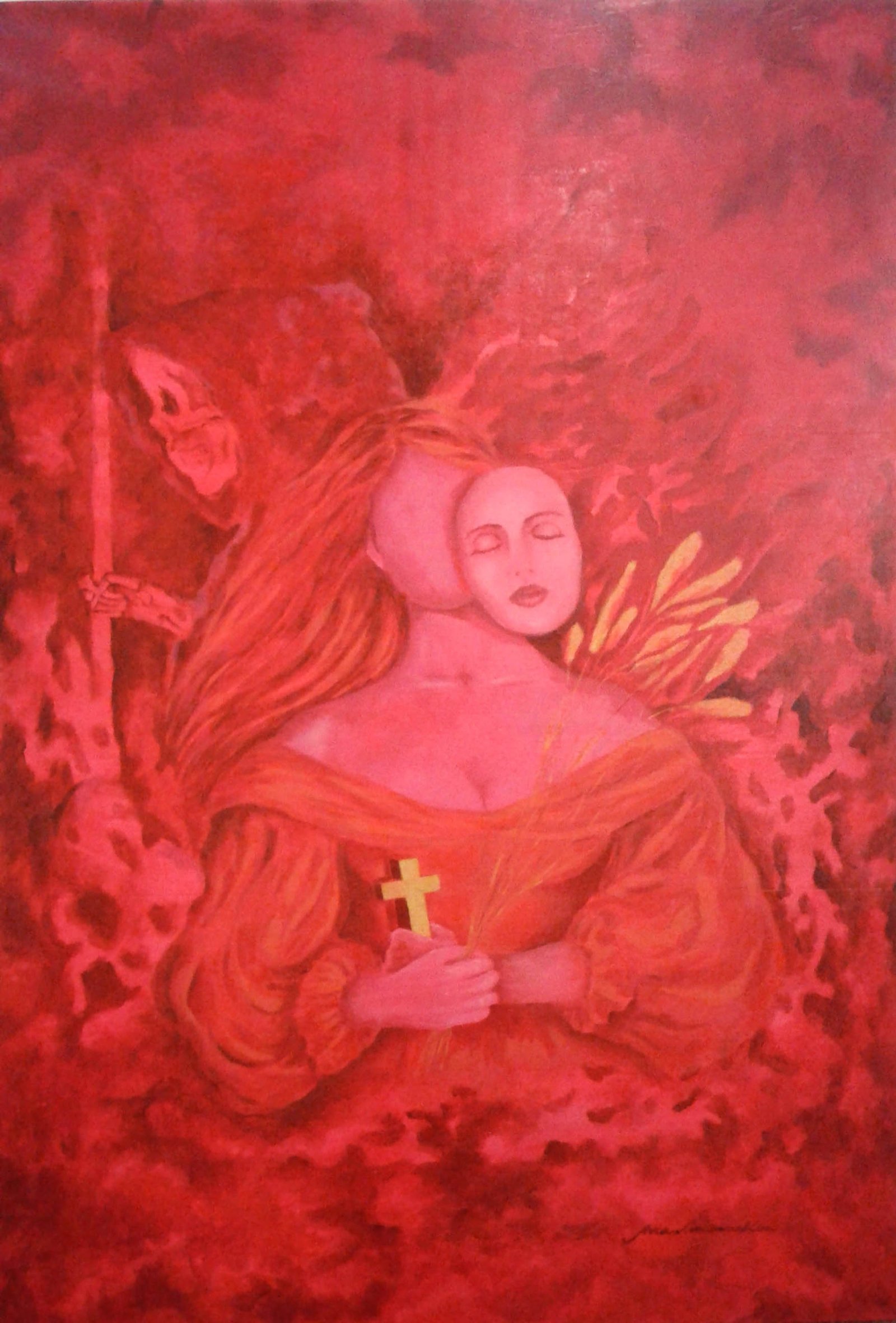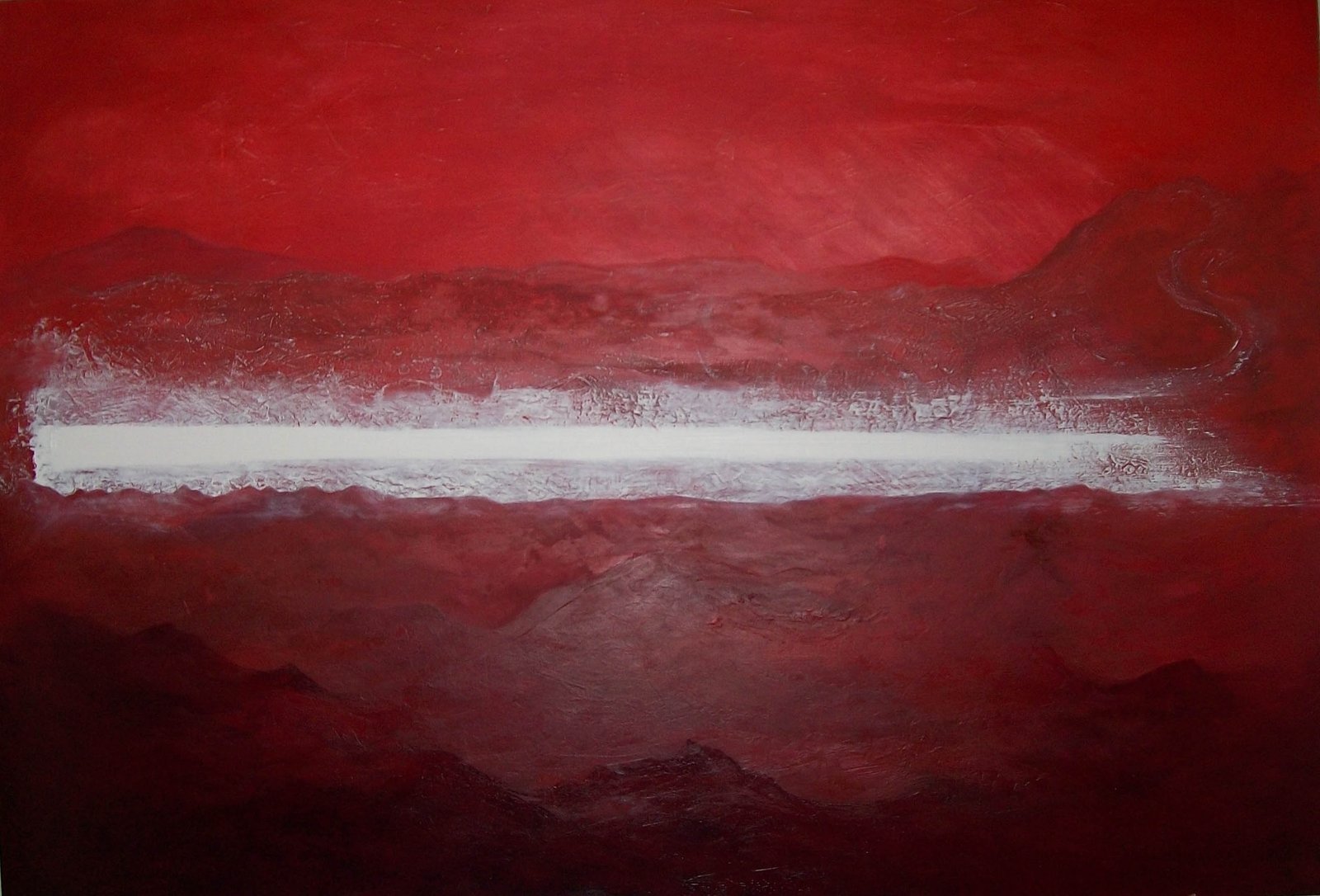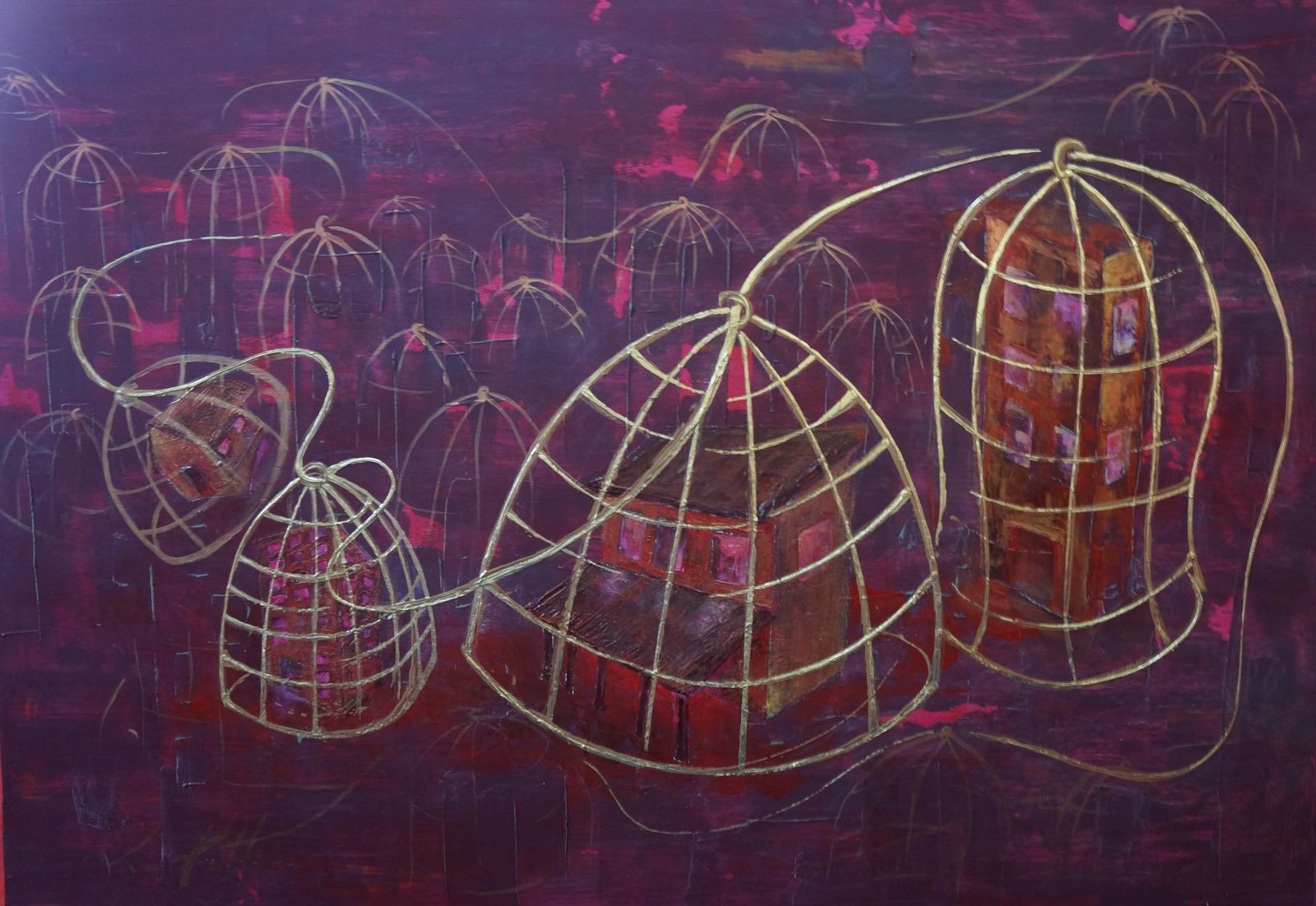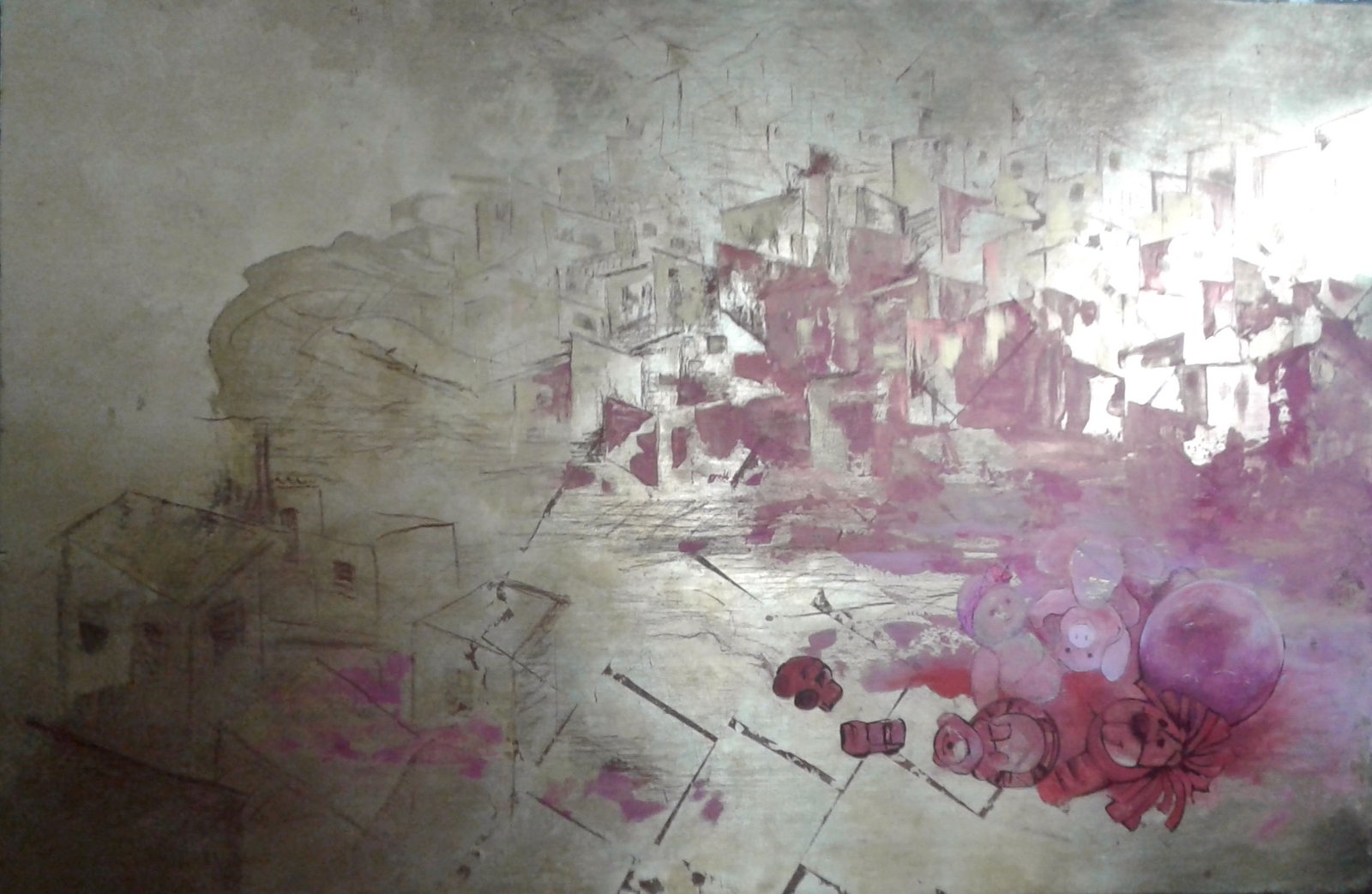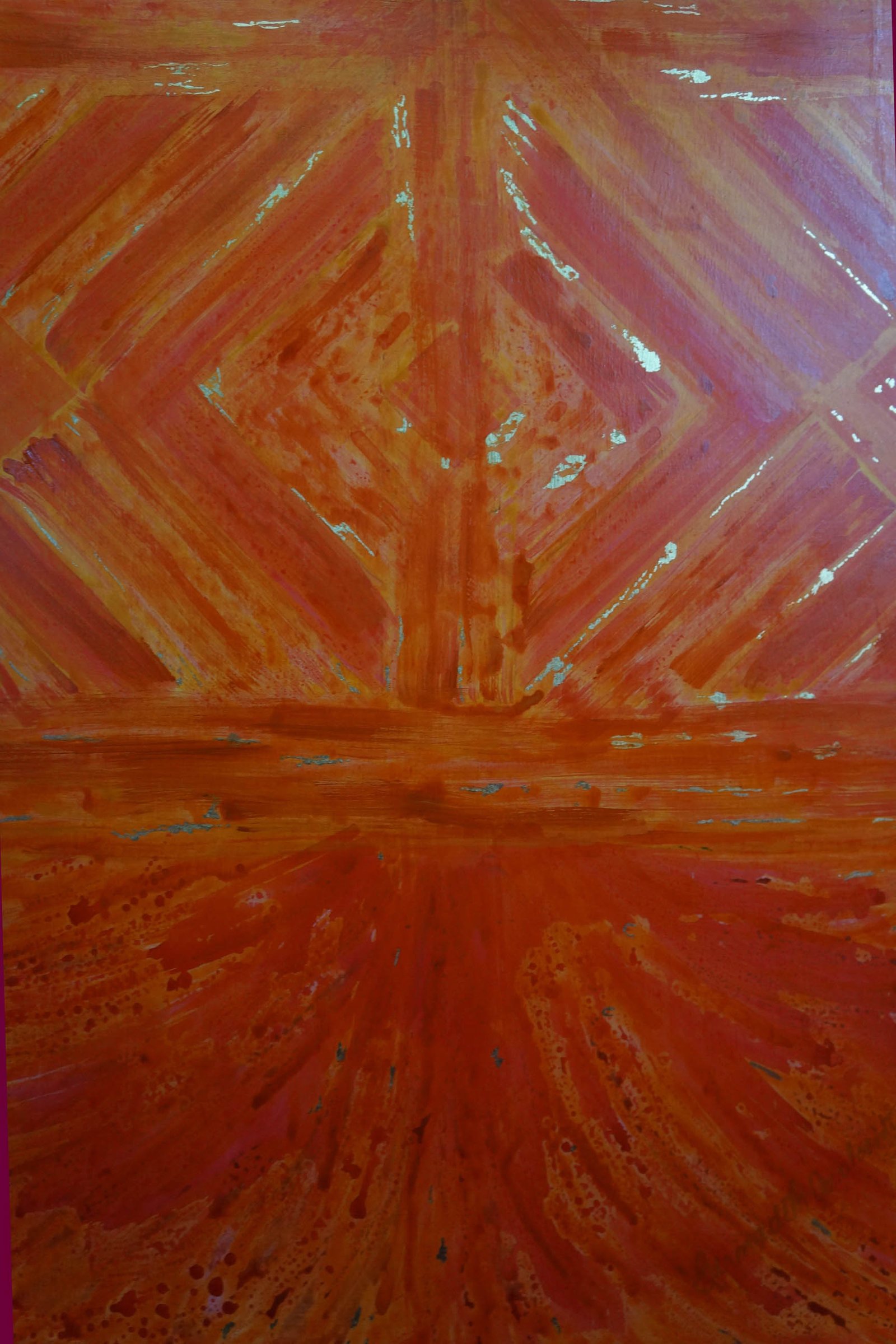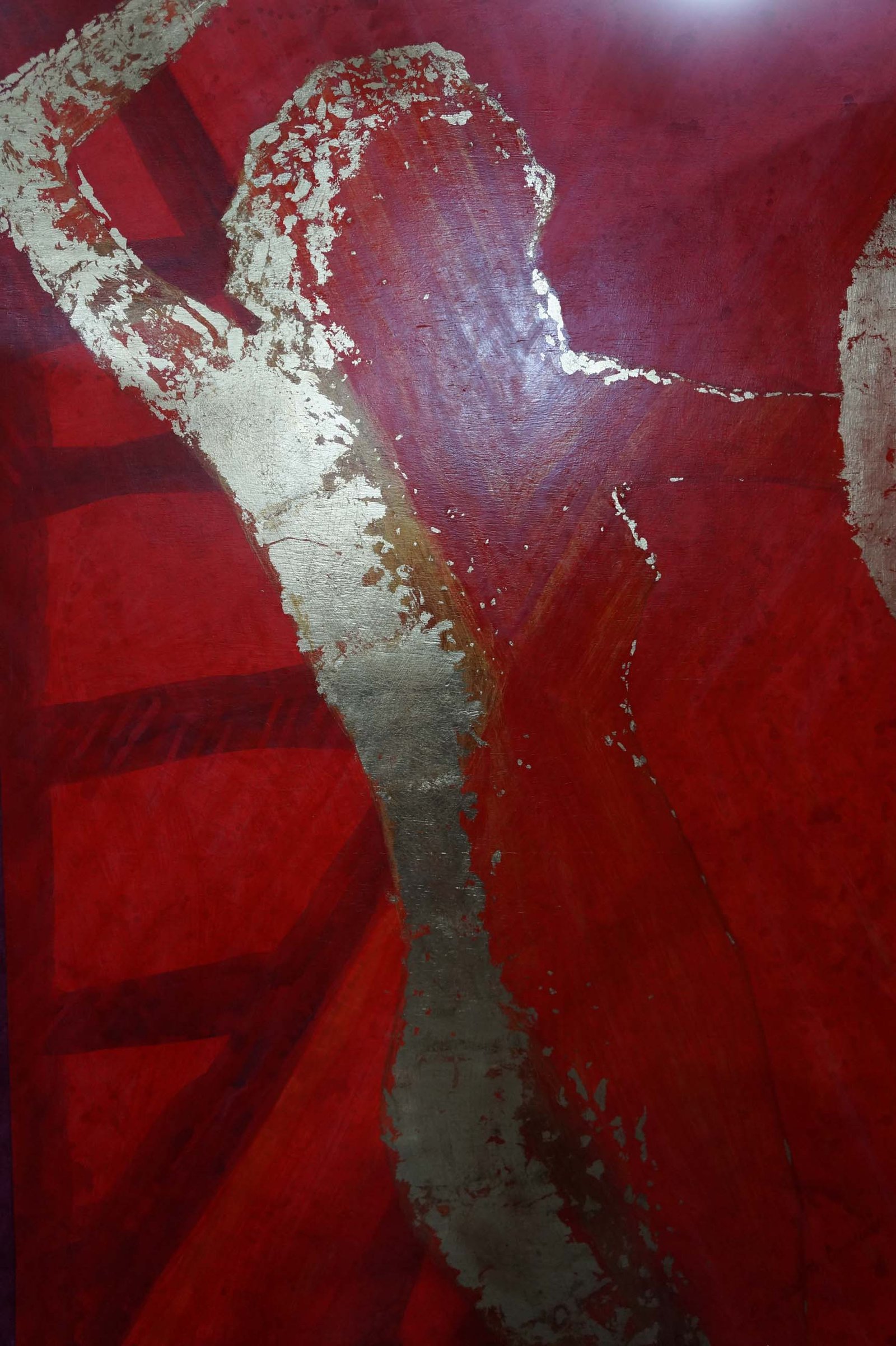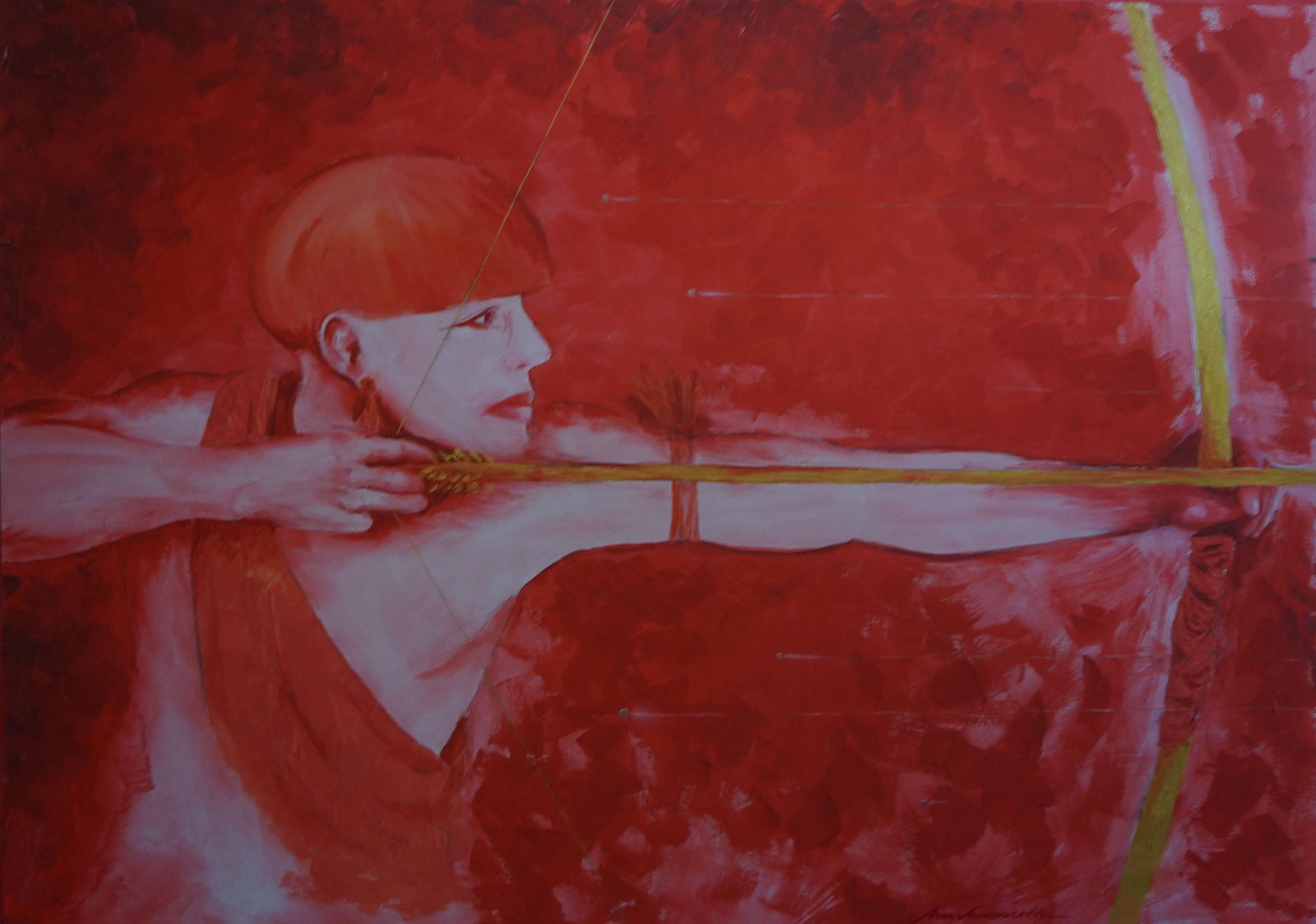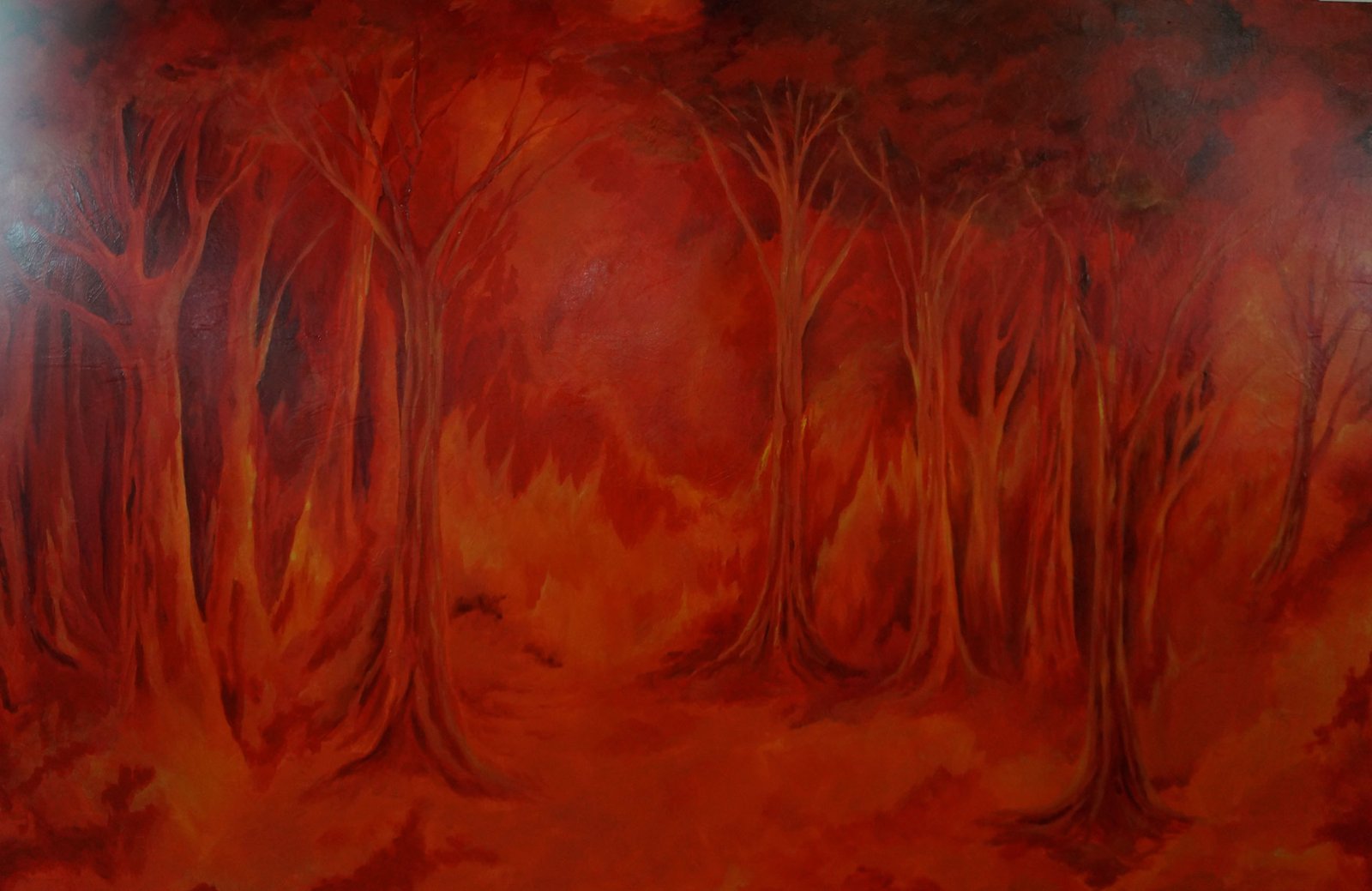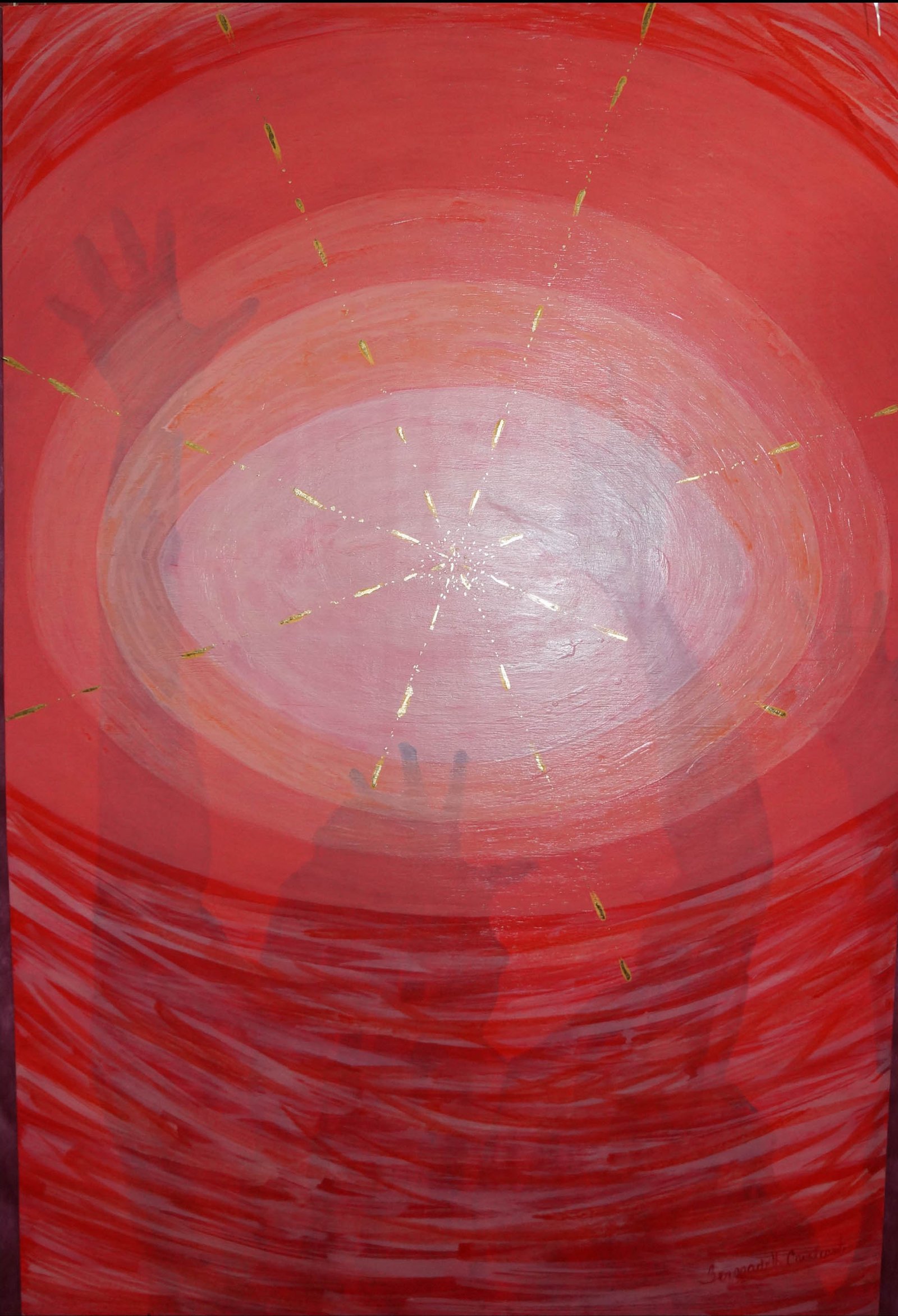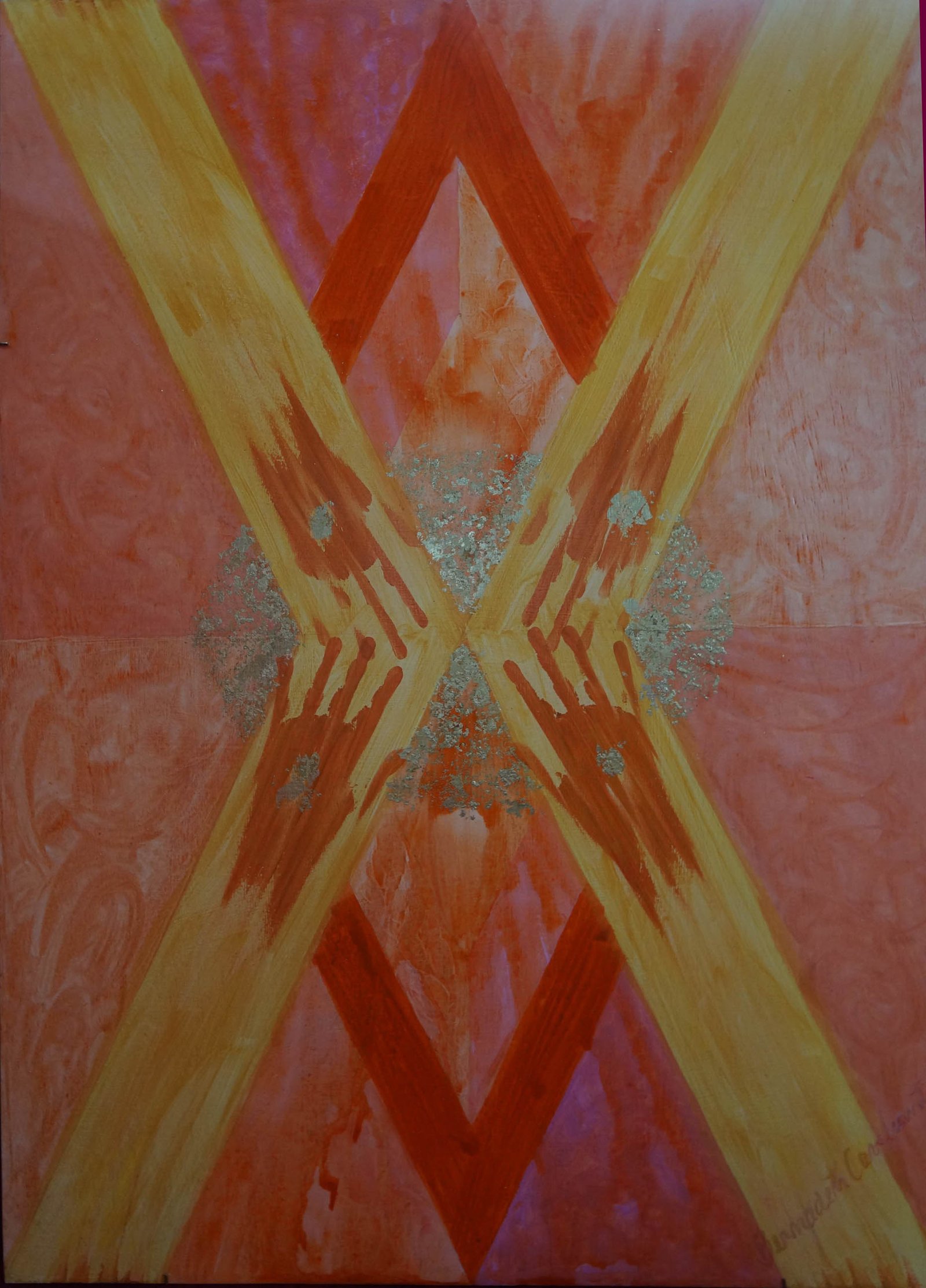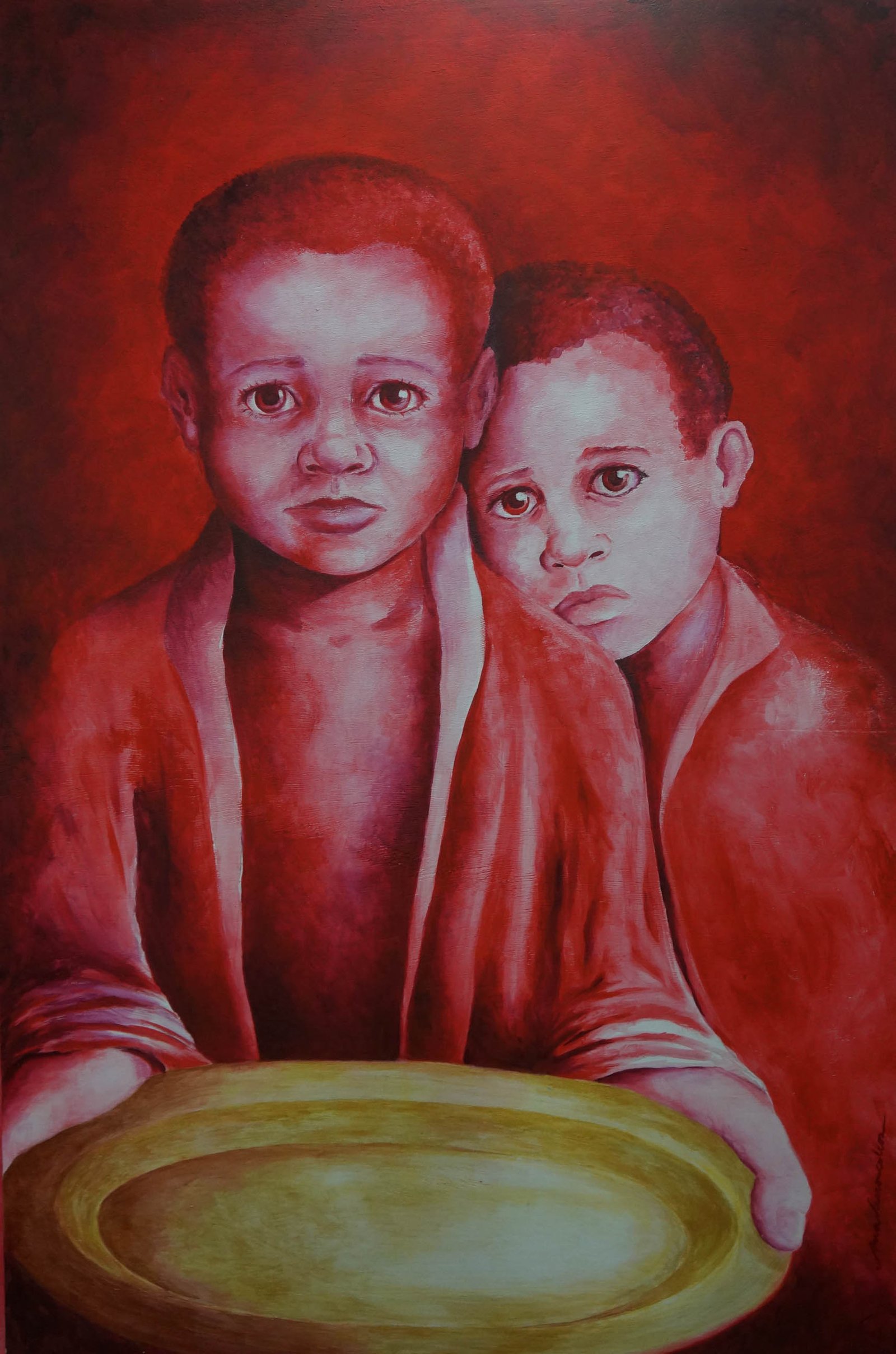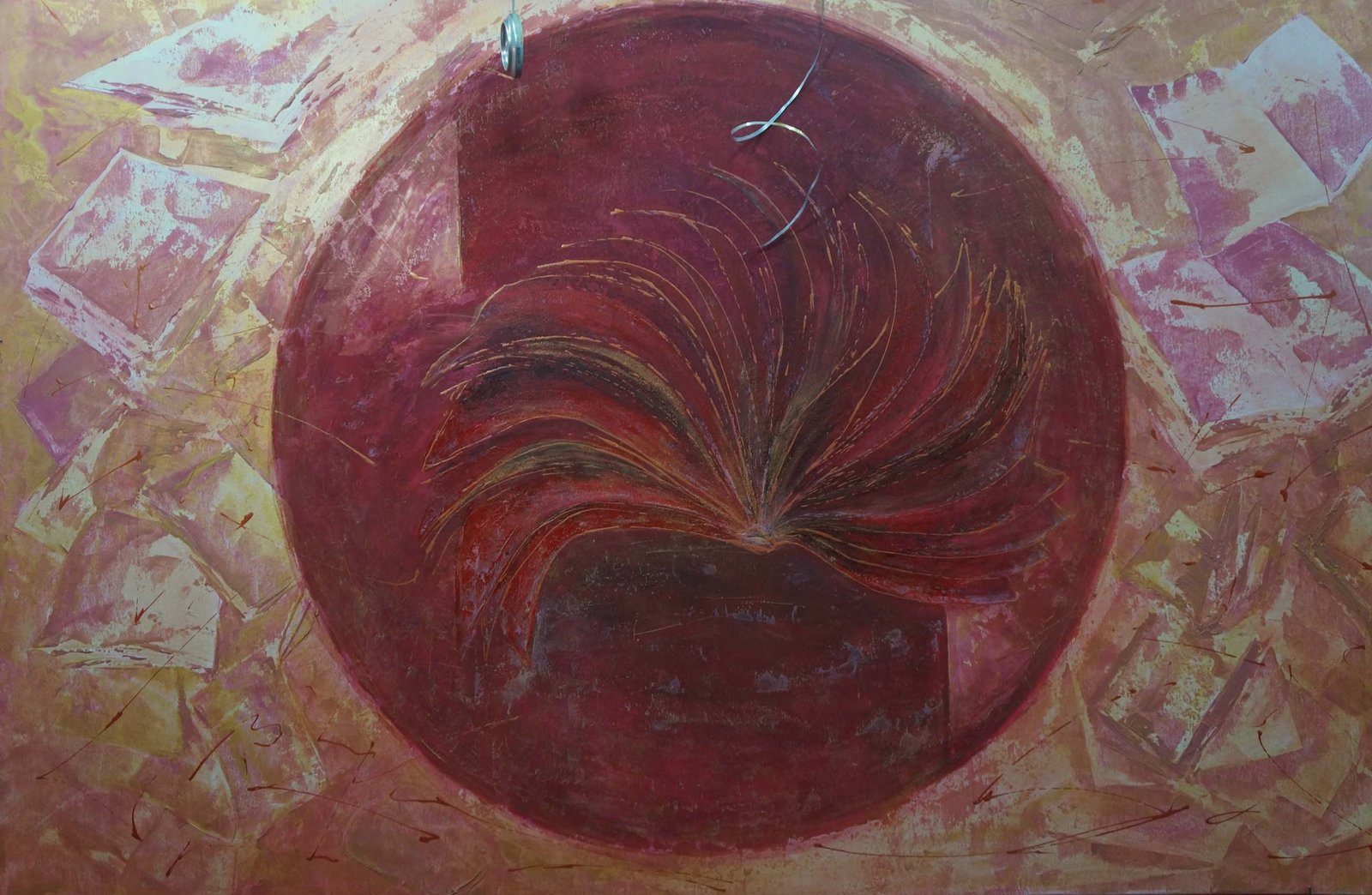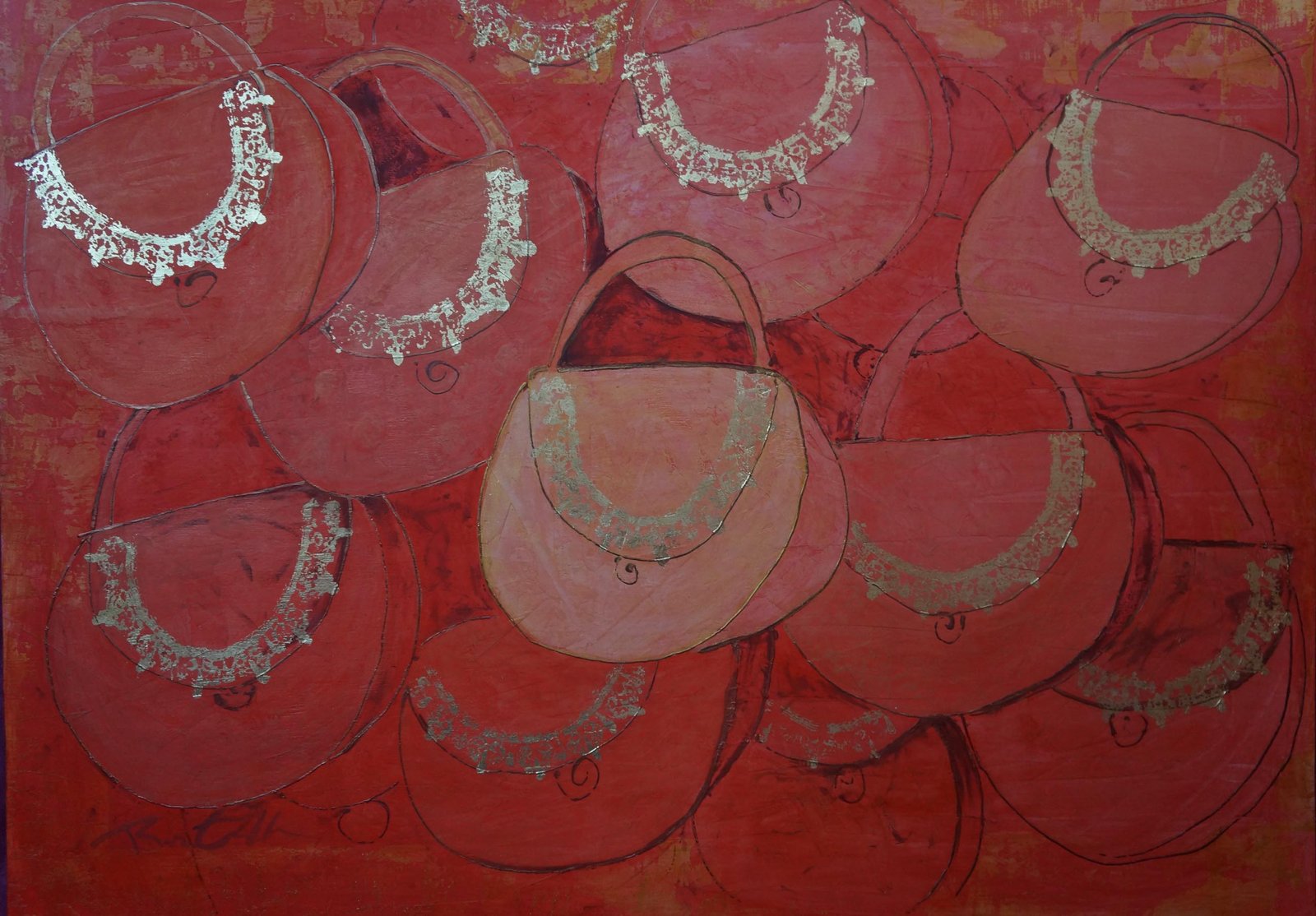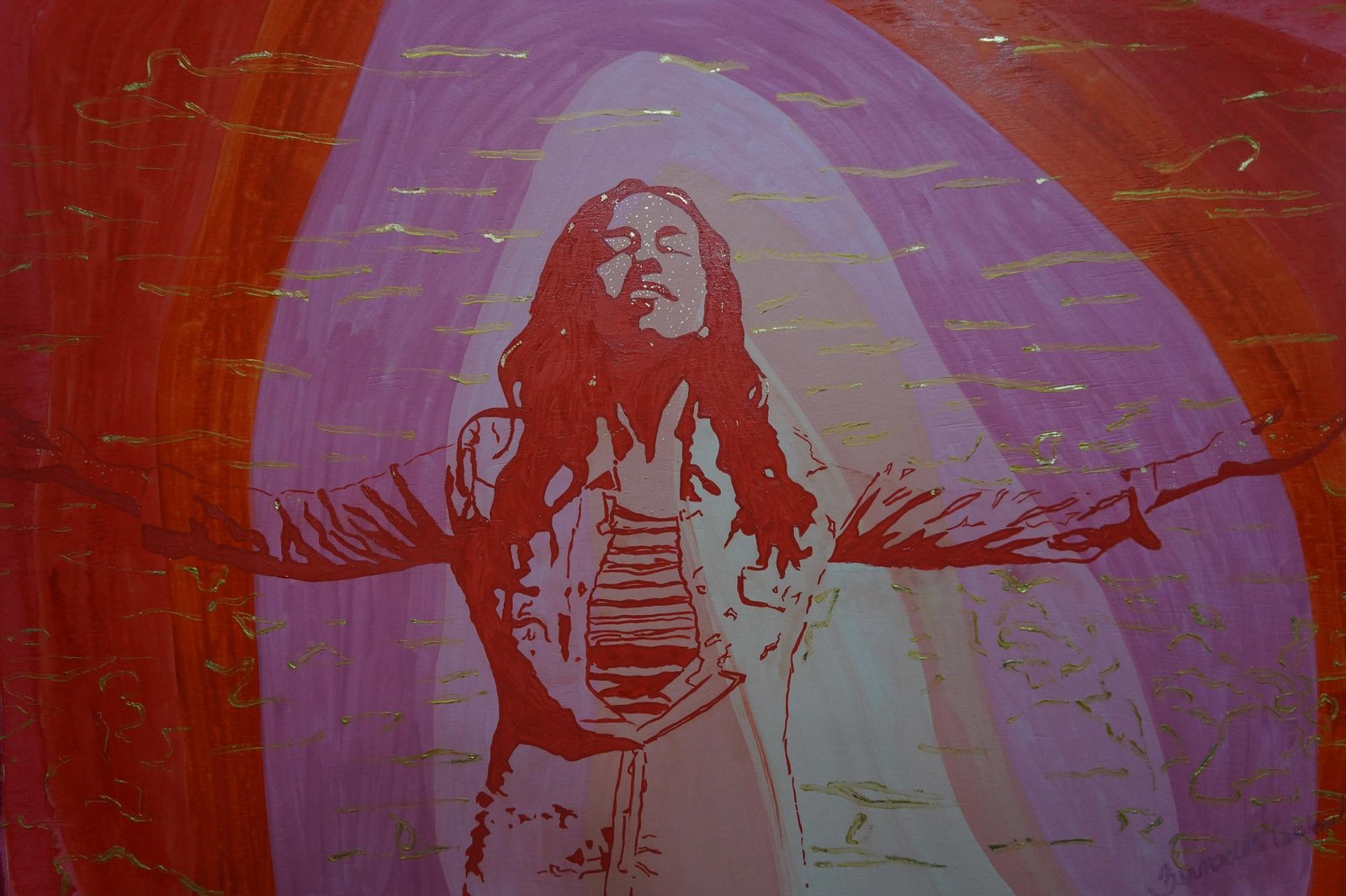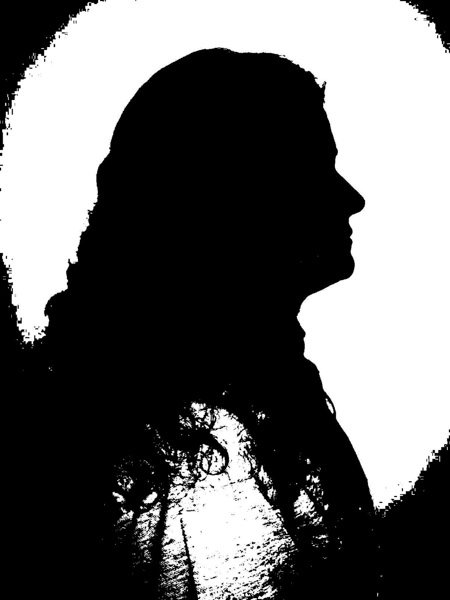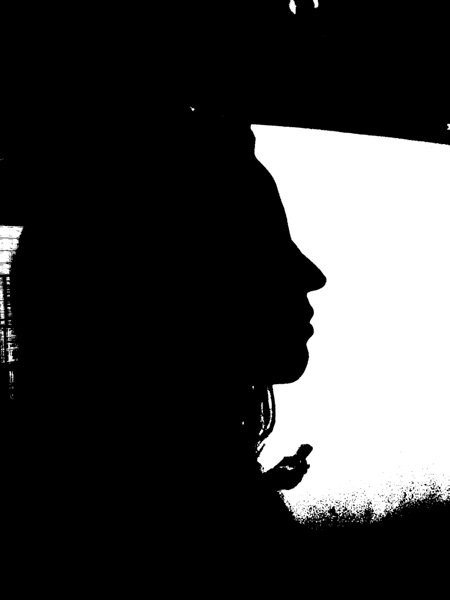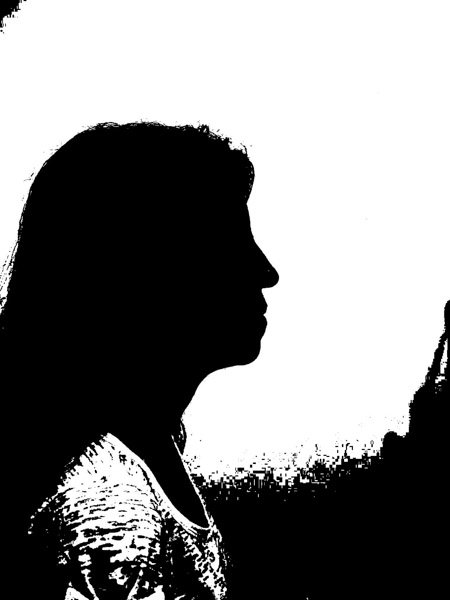Neobarrocas Exhibition
October 2016
Following the first exhibition held at the end of 2014, Ana Vasconcellos, Bernadeth Cavalcantti and Rosa Calheiros present new works where aesthetic and baroque themes are confronted with the contemporary world.
Four great themes guide the works of painting presented here:
Transience of the World
Man As Wolf for Man
The Madness of the World
Self Portrait Under Intense Light
TRANSIENCE OF THE WORLD
The perception of the world as a place of passage, of extremely unstable and transient structures is typical of Baroque aesthetics: life is fleeting, luck is launched at any moment and everything can change every second. The idea of fugacity, however, is that of eternity: on the one hand, a world that is nothing, is “no permanence”; on the other, a world under endless reconstruction.
To express her idea of the transitory nature of the world, Ana Vasconcellos discusses the rites of passage, of life and death, as well as the mysterious unfolding and the experiences of impending death. The feeling of fugacity that populated the baroque spirit and alerted to a future life of accountability is worked by the artist and biased through the learning that purifies the heart.
Second Infinite, according to Rosa Calheiros, speaks on the complex enigma of “flowing time” and “non flowing time”. Can there be another infinite, a second infinite? But the picture also speaks of a “second”, a fraction of time, which tears this same time, and also becomes infinite, not by flowing eternally but for becoming paralyzed in our memory.
The perpetual turning of waters often makes us think that this cycle is eternal. Indeed, it seems to have been so for a long time. However, the irresponsible and excessive intervention of the human being has managed to shake this primordial matrix of life.
With Water Drop Bernadeth Cavalcanti invokes the idea of eternal source while warning about the time left to reverse the damage to the planet's waters, remembering that perhaps “only one drop of water may be the last straw”.
Man as Wolf For Man
The idea of a bad man by nature populates the baroque mentality alongside the certainty that a good God has made him his image and likeness. How can a bad man by nature be an image and likeness of a good God by nature? Is evil a degenerate good? Is evil a selfish good? Is there evil in you? The link between a good that is announced as possible and the perception of an evil that manifests itself at all times keeps alive the eternal question of the threat that the other represents.
In the forest, the wolf is the wolf; in the city, man is wolf. For the artist, nothing represents better the fear, that men feel for other men, than living locked in rich and comfortable housing, in which one feels desperately in prison.
"Stray Bullet” is a reflection on emptiness and disenchantment as part of a “humanly violent” world. As if the forces of nature, such as storms and earthquakes, were not enough, the human being assumes the tasl of destroying the other. In the work of Rosa Calheiros, a stray bullet went through the city, took away the dream, the hope and the child.
The massacre of indigenous peoples, either by acculturation that disrespects their beliefs and origins, or by deliberate massacre, is remembered by Bernadeth Cavalcanti as a sign of Man as Wolf for Man.
To the women massacred over the centuries, Bernadeth Cavalcanti presents her «Amazon, a real or imaginary symbol of the struggle of women against those who forget that no one comes into the world without passing through a woman´s body. For the painter, the female body is the true portal for humanity.
The thinker* who in the seventeenth century divulged the idea that the human being would be evil by nature, wrote about these female warriors who rejected male conviviality, making the theme an important face of the baroque theology of man as a wolf.
[*Thomas Hobbes. Leviathan. Chapter XX]
With "Target" Ana Vasconcellos wanted to express the destructive impulse of the human being in relation to another that is not perceived as equal. In other words, it speaks of an absurd 'permission to exterminate' those who do not fit into the totalitarian desire of a humanity without plurality of colors, races, laughter and beliefs. It speaks especially of hatred for those who, even though defenseless, fight to the death.
"Hell" is the title of the second part of Dante's Divine Comedy that Ana Vasconcellos chose to name her work. Ana's work refers to the notion of responsibility for the destruction of the forests and reminds us that we will all feel the 'hideous vapors', a consequence of the forests that are burned by the excessive ambition of man.
[* Dante, Inferno, Canto X, 136]
The Madness of the World
The world as an incomprehensible place, as a place of perpetual estrangement and perdition. In the baroque one realizes that the 'opposite of everything' is not nothing, but simply an 'everything in reverse' that breaks with the tenuous limits of the reasonableness of the world. And this 'everything in reverse' brings with it both the possibility of aggregation of opposites and that of the structural rejection of the other. Humanity indulges in the intense desire to search incessantly for 'real fugitive things', gods of the moment and ephemeral satisfactions. A world perceived as 'crazy' where it seems that only virtual reality deserves the name of reality.
Greed for inheriting the sky often makes us look like crazy destroying everything around us, slaughtering our own life on earth. 'Virá' speaks of fanaticism, of hopes built by the yearning not to live in the world, by the refusal to live the 'here and now' and by the refusal to make it a better place.
It's the representation of greed and envy. The hands that try to reach 'the jewel' act fast: each one wants to get it first, although no one knows exactly why.
So much wealth, so much misery. For Ana Vasconcellos, is crazy the world in which so much is wasted and so many starve. Childhood abandoned to begging is an overwhelming reality. Although it is considered correct that no one can be condemned by the error of others, this does not seem to be true for the children who continue being relegated to the helplessness, punished by some imagined fault of their parents.
The oppression of women, who many do not even realize anymore, who are condemned to never show their faces in public. The artist works the theme of the world as mad by the bias of the customs and traditions that seem naked of all reasonability.
In the work of Rosa Calheiros, the «book that wants to contain all truth” despises all others who revolve around it without being able to penetrate into this closed world. The “Book of Truth” seems to be the result of a totalitarian desire, of a disproportionate ambition to close knowledge. It does not light up and is not illuminated.
Encouraging over-consumption is one of the follies of our time. Many of the millions of replicated objects are useless to us. But hurry up! Buy it! It's the last one.
Self Portrait Under Intense Light
To represent oneself is typical of this present time of “selfies”. It's smiles and smiles and smiles on mobile phones. There is no shade. Nobody is sad. In the Baroque the self-portrait was also in fashion - Rembrandt painted a series of them throughout his life. The subject “Self-portrait under intense light” comes here to talk about its opposite: what does the light hide?
A game between light and shadow that speaks of a part of us that we do not know, as our double, another being that mysteriously also composes us. Maybe we are ourselves from another time and place. To self-portray is, for me, to portray an existence. No one is just himself, we are much more than this.
The fullness of a feeling that connects us with everything around us and that makes us exist a life that only becomes possible in the plural dimension. I am me and all this vital energy that makes me exist.
